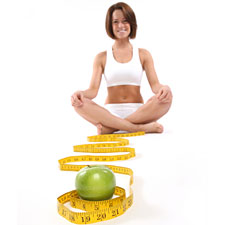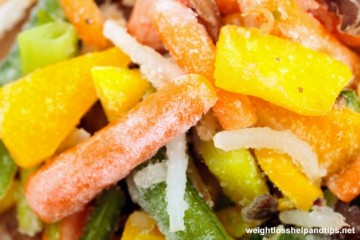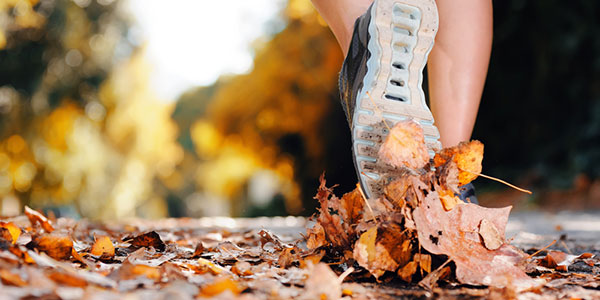The DASH Diet: Healthy Eating to Control Your Blood Pressure
What is the DASH diet?
DASH stands for Dietary Approaches to Stop Hypertension. It is a balanced eating plan that your family doctor might recommend to help you lower your blood pressure. The DASH diet:
- Is low in salt, saturated fat, cholesterol and total fat.
- Emphasizes fruits, vegetables, and fat-free or low-fat milk and milk products.
- Includes whole grains, fish, poultry and nuts.
- Limits the amount of red meat, sweets, added sugars and sugar-containing beverages in your diet.
- Is rich in potassium, magnesium and calcium, as well as protein and fiber.
How can the DASH diet help me stay healthy?
Getting too much sodium (salt) in your diet can contribute to high blood pressure (also called hypertension). Some salt is in foods naturally, and some salt is added to food when it is processed or prepared. Following the DASH diet can help you lower your blood pressure, or prevent high blood pressure, by reducing the amount of sodium in your diet to less than 2,300 mg per day.
The fruits, vegetables and whole grains recommended in the DASH diet provide many other elements of a healthy diet, such as lycopene, beta-carotene and isoflavones. These can help protect your body against common health conditions, such as cancer, osteoporosis, stroke and diabetes. Following the DASH diet can also help reduce your risk of heart disease by lowering your low-density lipoprotein (LDL, or "bad") cholesterol level.
Following the DASH diet may drop your blood pressure by a few points in as little as 2 weeks. However, you should not stop taking your blood pressure medicine, or any other prescribed medicine, without talking to your doctor first.
What kinds of foods are included in the DASH diet?
The DASH diet is nutritionally balanced for good health. You don’t need to buy any special foods or pills, or cook with any special recipes, to follow the DASH diet. If you follow the DASH diet, you will eat about 2,000 calories each day. These calories will come from a variety of foods.
Where is sodium in my diet?
| Food Serving | Sodium Content |
|---|---|
| ¼ teaspoon table salt | 575 mg |
| ½ teaspoon table salt | 1,150 mg |
| 1 teaspoon table salt | 2,300 mg |
| 1 hot dog | 460 mg |
| 1 regular fast-food hamburger | 600 mg |
| 2 ounces processed cheese | 600 mg |
| 1 tablespoon soy sauce | 900 mg |
| 1 serving frozen pizza with meat and vegetables | 982 mg |
| 8 ounces regular potato chips | 1,192 mg |
The DASH diet
- Whole grains (6 to 8 servings a day)
- Vegetables (4 to 5 servings a day)
- Fruits (4 to 5 servings a day)
- Low-fat or fat-free milk and milk products (2 to 3 servings a day)
- Lean meats, poultry and fish (6 or fewer servings a day)
- Nuts, seeds and beans (4 to 5 servings a week)
- Fats and oils (2 to 3 servings a day)
- Sweets, preferably low-fat or fat-free (5 or fewer a week)
- Sodium (no more than 2,300 mg a day)
You can adapt the DASH diet to meet your needs. For example:
- If you drink alcohol, limit yourself to 2 drinks or less per day for men and 1 drink or less per day for women.
- To reduce your blood pressure even more, replace some of the carbohydrates in the DASH diet with low-fat protein and unsaturated fats.
- If you need to lose weight, reduce the number of calories you eat to about 1,600 per day.
- Follow a lower-sodium version (no more than 1,500 mg daily) if you are 40 years of age or older, you are African American or you already have high blood pressure.
How can I change my eating habits?
Don’t be discouraged if following the DASH diet is difficult at first. Start with small, achievable goals. The following ideas can help you make healthy changes:
- Pay attention to your current eating habits. Make a list of everything you eat for 2 or 3 days. Compare this list to the DASH diet recommendations above and see what changes you need to make in your diet.
- Make one change at a time. For example, start by choosing lower-fat versions of your favorite foods or adding more whole grains to your meals.
- Learn what makes a serving for each type of food. For example, 1 serving equals 1 slice of bread, 8 ounces of milk, 1 cup of raw vegetables or 1/2 cup of cooked vegetables. For more serving sizes, go to the NHLBI site. Don’t have a measuring cup? One serving (3 ounces) of meat or poultry is about the size of a deck of cards. One serving (1/2 cup) of rice or potato looks like half a baseball, and a serving of cheese is about the size of 4 stacked dice.
- If eating more fruits and vegetables gives you gas, bloating or diarrhea, increase these foods slowly. You can also talk to your family doctor about taking over-the-counter medicines to reduce these symptoms until your body adjusts.
- Get more exercise. Physical activity helps lower your blood pressure and can help you lose more weight.
- Use salt-free seasonings, such as spices and herbs, to add flavor to your recipes and reduce or eliminate salt.
- Include as many fresh and unprocessed foods as possible. Cut back on frozen dinners, packaged mixes, canned soups and bottled salad dressings, which are often high in sodium.
- When buying canned, frozen or processed foods, check nutrition labels for the amount of sodium, sugar and saturated fat. Look for the phrases "no salt added," "sodium-free," "low sodium" or "very low sodium" on food packages. Choose foods with monounsaturated and polyunsaturated fats.
- Steam, grill, poach, roast or stir-fry foods. Use low-sodium broth or water instead of butter or oil for sautéing.
- When you eat at a restaurant, ask how foods are prepared. Ask if your order can be made without added salt. Don’t add salty condiments, such as ketchup, mustard, pickles or sauces, to your food.
Other Organizations
- Prev:Gluten-free Diet
- Next:What it Takes to Lose Weight
-
Whats Your Diet and Fitness IQ?
V
-
Home Meal Delivery is Your Solution to Not Having Time to Eat Healthy
Home Meal Delivery is Your Solution to Not Having Time to Eat Healthy
-
Week 12: Back to the grind
By Dawn Im baaaack—at work, that is,
-
Cheap Diet Food: Better on Your Wallet, But Better for You?
Cheap Diet Food: Better on Your Wallet, But Better for You?
-
Food Addiction: A Craving You Can’t Seem to Control
Food addiction is to have an overwhelmi
-
What to Eat for Dinner to Lose Weight
Dinner, they say, should be the lightest meal of all day. Unfortunatel
- DON'T MISS
- Healthy Diet – Eat a variety of foods
- Drinking Lemon Water on Empty Stomach Immediately After Waking Up!
- Almonds – Superfood For Weight Loss
- This Easy Exercise Burns More Fat Than 1,000 Ab Crunches
- Improve Your Posture and Lose Your Weight Without Starvation: Lie Only 3X a Day For 5 Minutes, But in This Way!
- If You Want A Flat Stomach, Stay Away From The Following Six Foods You Probably Consume Daily
- Adopt A Weight Loss Plan To Remain Healthy Ever And Forever
- How to Stock a Slimming Kitchen
- How to Stay Party Food Savvy
- Weight Loss Diet - Planning For Your Diet




